Miller and Levine Biology Chapter 17, 18
1/48
There's no tags or description
Looks like no tags are added yet.
Name | Mastery | Learn | Test | Matching | Spaced |
|---|
No study sessions yet.
49 Terms
evolution
the process of changing over time.
artificial selection
selective breeding of plants and animals to promote the occurrence of desirable traits in offspring.
fitness
how well an organism can survive and reproduce in its environment.
natural selection
process by which organisms that are most suited to their environment survive and reproduce out successfully.
biogeography
study of past and present distribution of organisms.
homologous structure
structures that are shared by related species and that have been inherited by a common ancestor.
analogous structure
body parts that share common function, but not structure.
vestigial structure
structure inherited from ancestors but have lost all original function due to different selection processes.
The Beagle
the ship that Darwin explored on.
Hutton & Lyell
led to Darwin's theories by their theories of old earth, uniformitarianism, and other geological processes.
Lamarck
believed that organisms could change during their lifetimes to become a more prefect creature by using or not using certain parts of their bodies. also believed these acquired traits could be passed down to the organisms offsprings.
Malthus
believed that if human population grew unchecked there would eventually be no space and food for everyone.
survival of the fittest
idea that only the organisms that are the strongest and can adapt to their environment will survive.
Gene Pool
Consists of all genes, including all the different alleles for each gene, that are present in a population.
Allele Frequency
The number of times an allele occurs in a gene pool, compared to the total number of alleles in that pool for the same gene.
Single-gene Trait
A trait controlled by only one gene.
Polygenic Traits
Many traits are controlled by two or more genes; each gene usually has two or more alleles.
Directional Selection
When individuals at one end of the curve have higher fitness than individuals in the middle or at the other end.
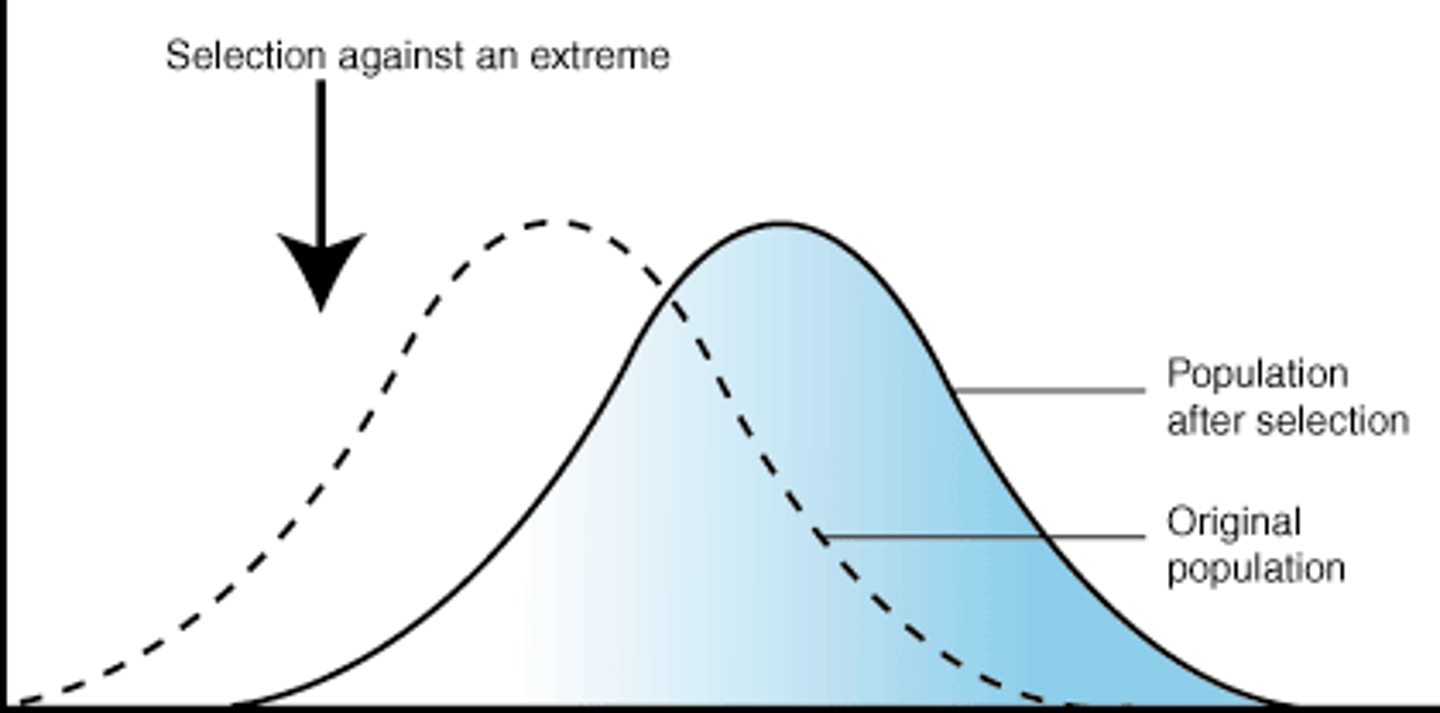
Stabilizing Selection
When individuals near the center of the curve have higher fitness than individuals at either end.
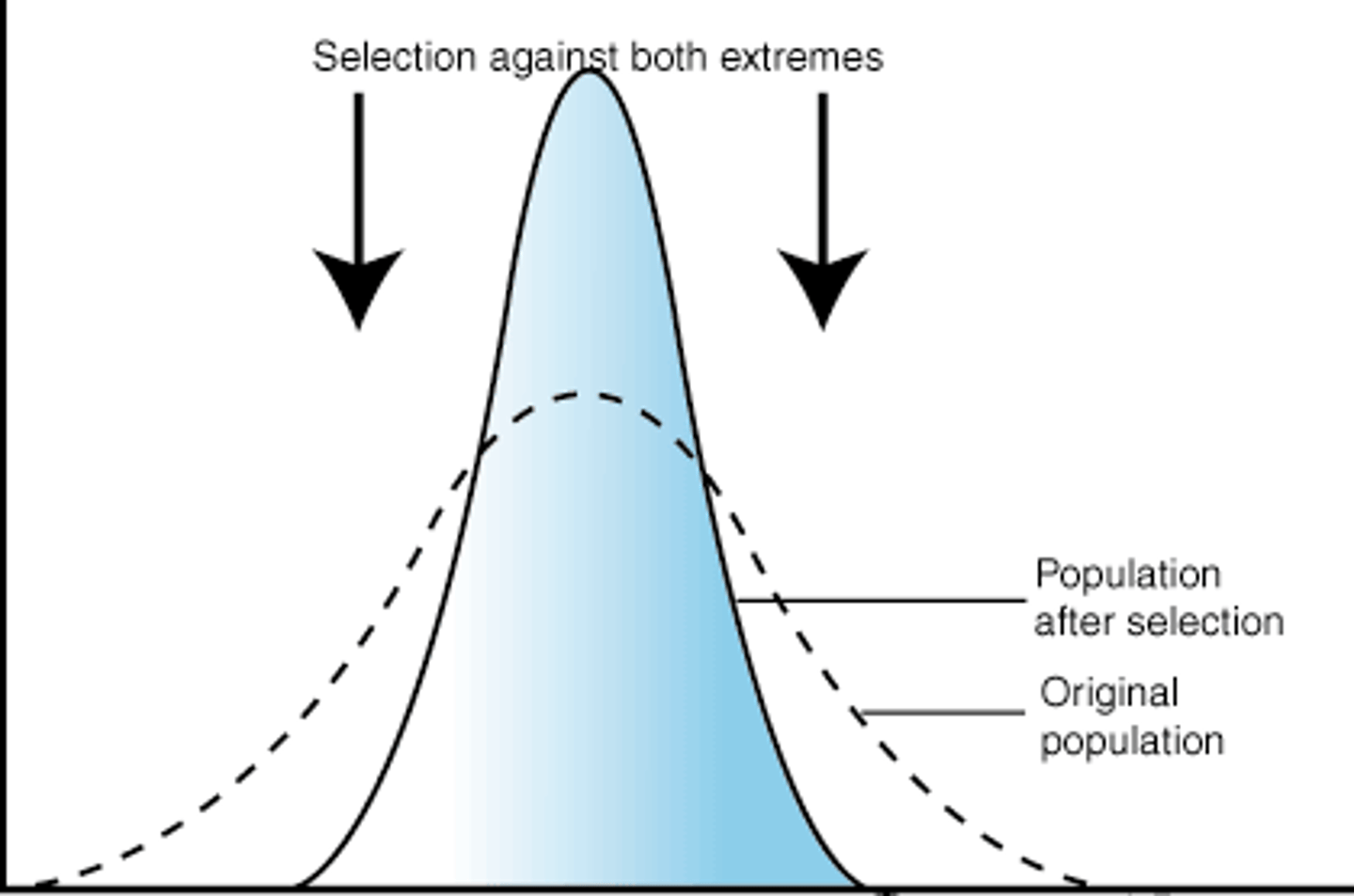
Disruptive Selection
When individuals at the outer ends of the curve have higher fitness than individuals near the middle of the curve.
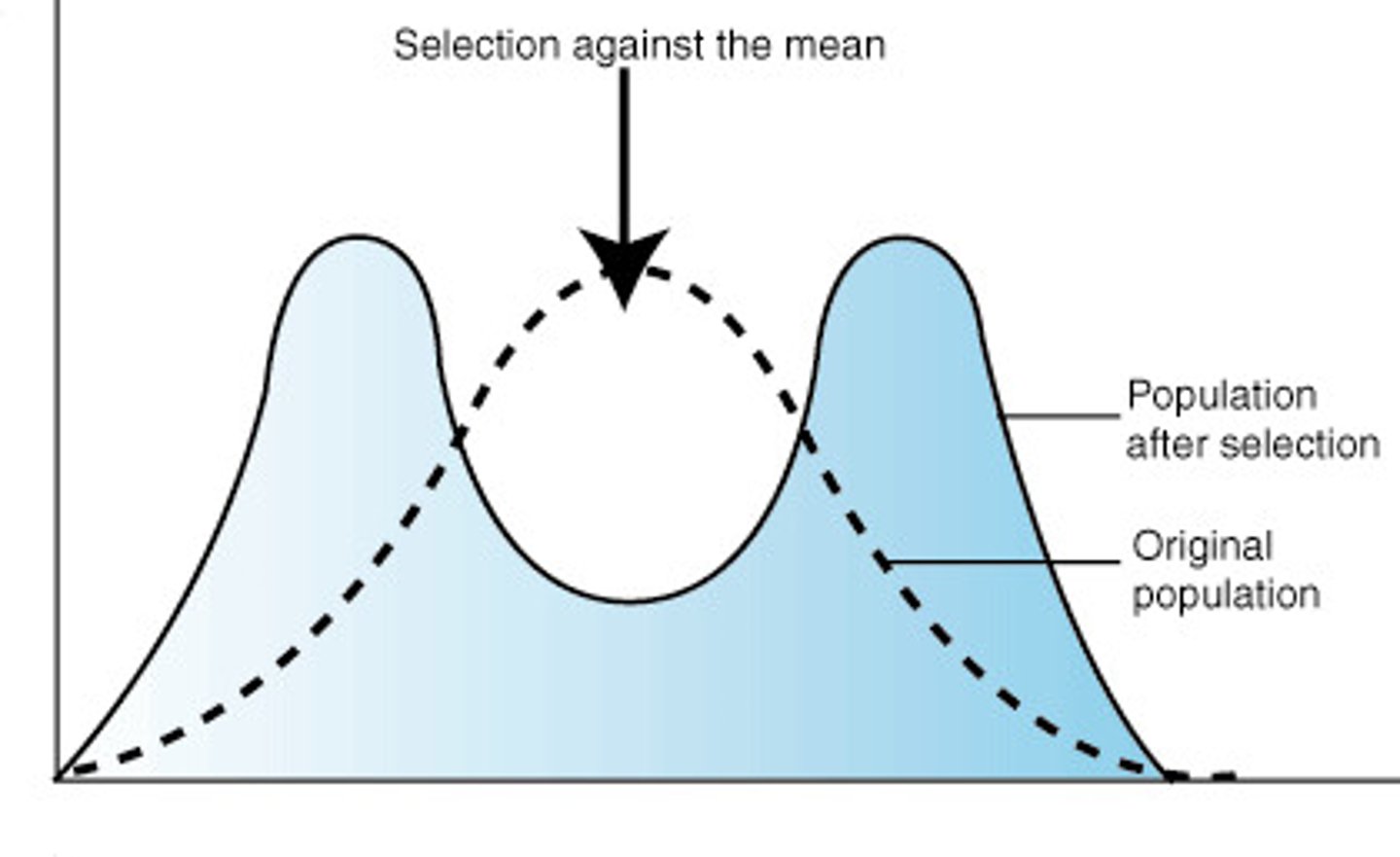
Genetic Drift
Random change in allele frequency caused by a series of chance occurrences that cause an allele to become more or less common in a population.
Bottleneck Effect
A change in allele frequency following a dramatic reduction in size of a population.
Founder Effect
Allele frequencies change as a result of the migration of a small subgroup of a population.
Genetic Equilibrium
If a population is not evolving, allele frequencies in its gene pool do not change.
Hardy-Weinberg Principle
Allele frequencies in a population should remain constant unless one or more factors cause those frequencies to change.
Sexual Selection
Individuals select mates based on heritable traits, such as size, strength, or coloration.
Species
A population or group of populations whose members can interbreed and produce fertile offspring.
Speciation
The formation of a new species.
Reproductive Isolation
When two populations no longer interbreed. leading to speciation
Behavioral Isolation
Form of reproductive isolation in which two populations develop differences in courtship rituals or other behaviors that prevent them from breeding.
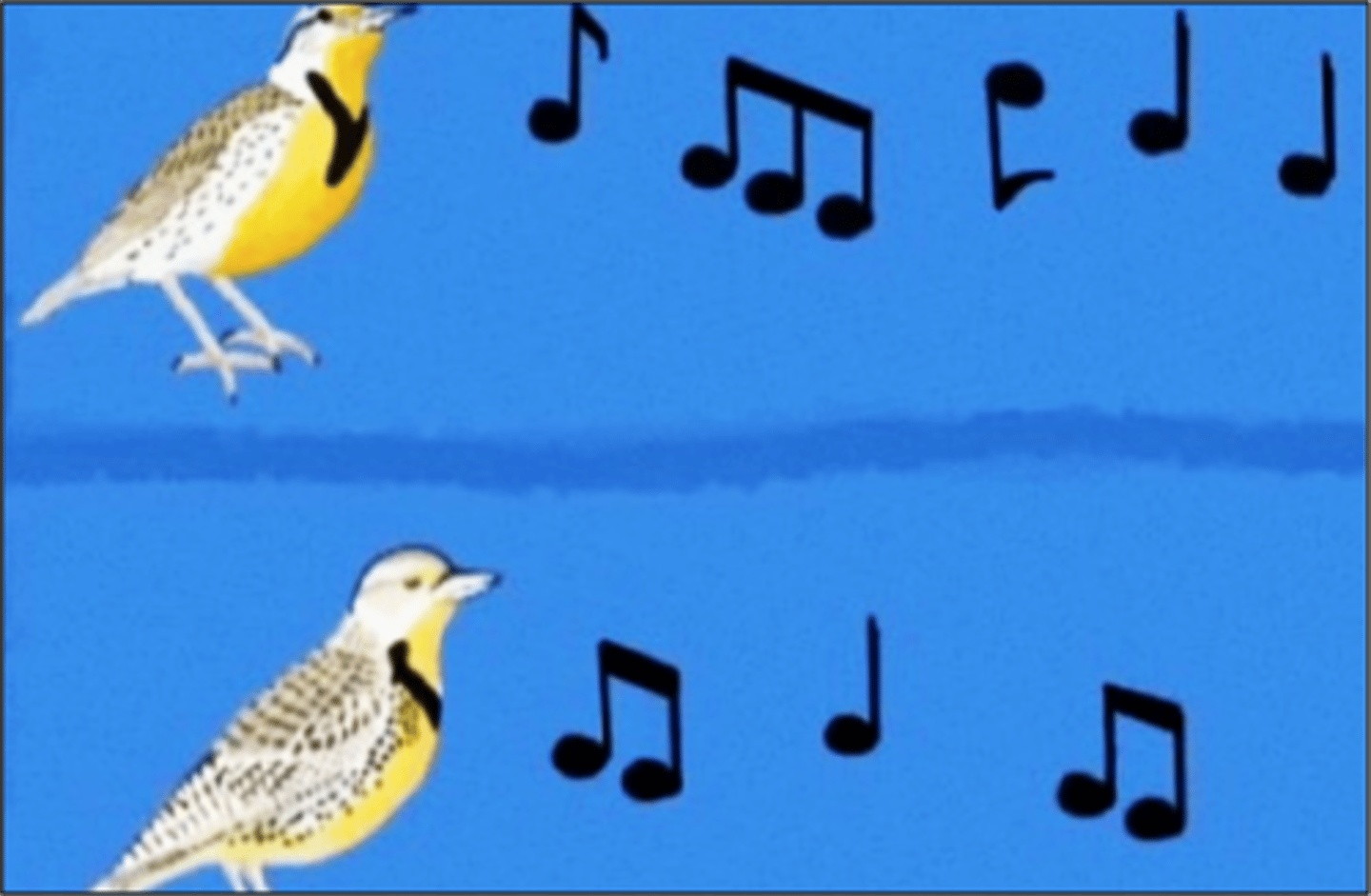
Geographic Isolation
When two populations are separated by geographic barriers such as rivers, mountains, or bodies of water.

Temporal Isolation
When two or more species reproduce at different times.
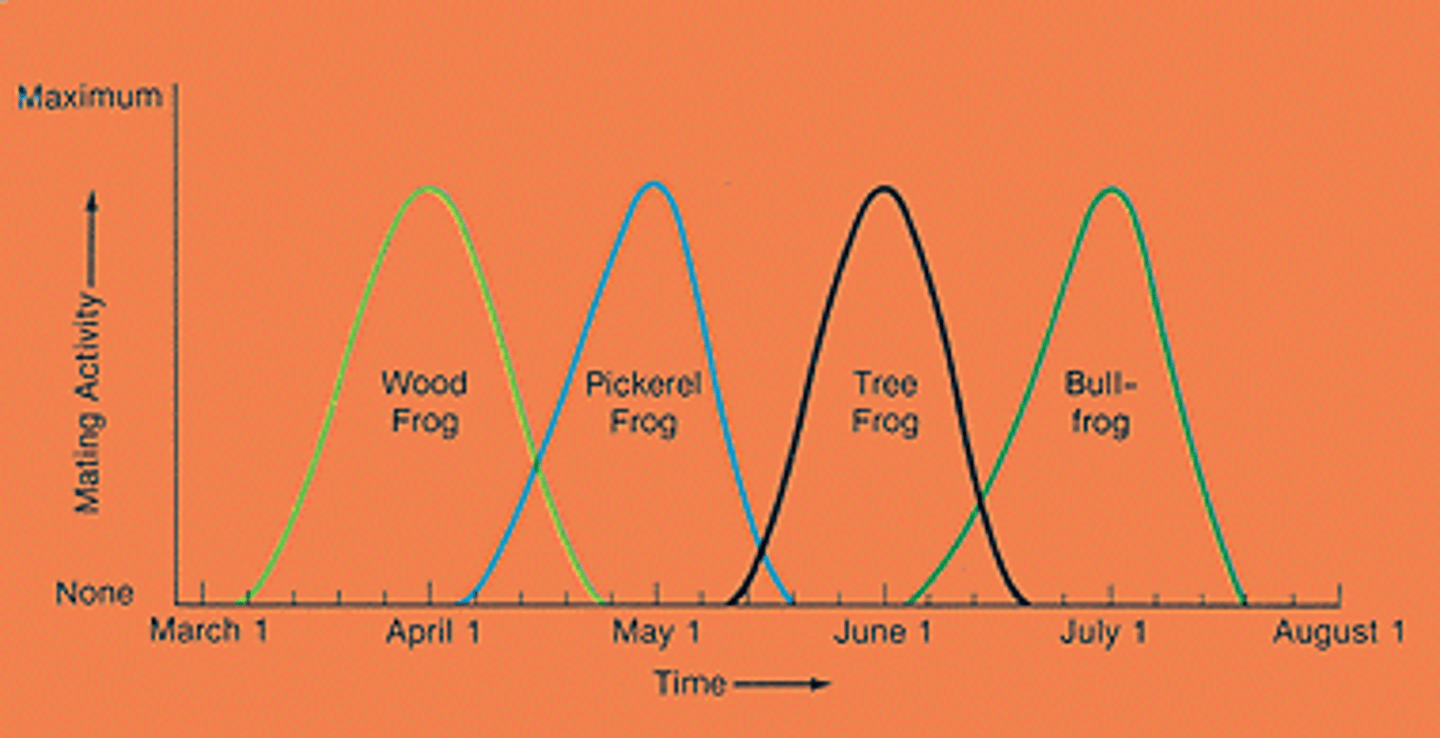
mechanical isolation (prezygotic)
Mating attempt occurs, but morphological (structural) differences prevent successful mating
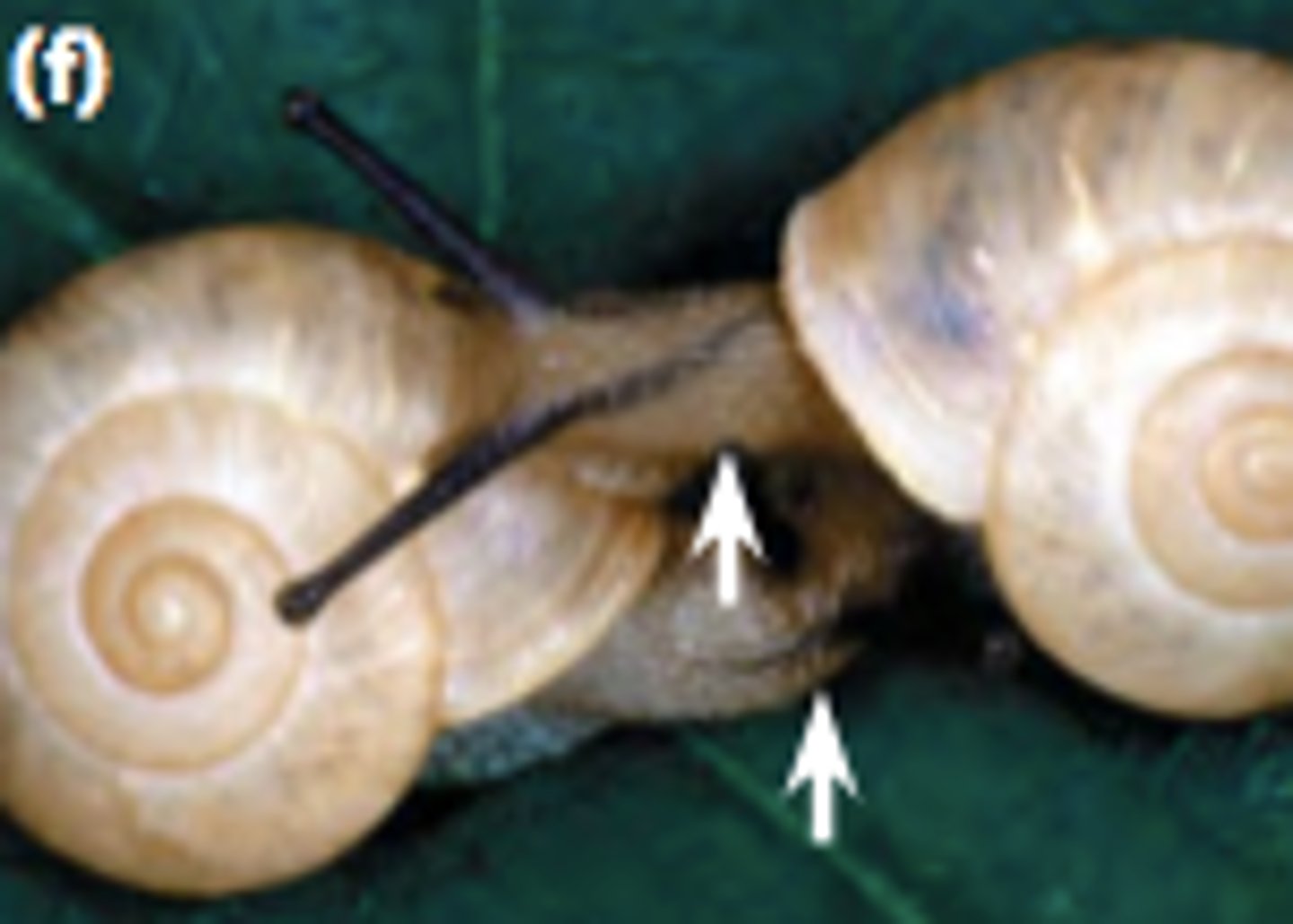
convergent evolution example
two unrelated species developing similar characteristics due to similar selective environmental. pressures
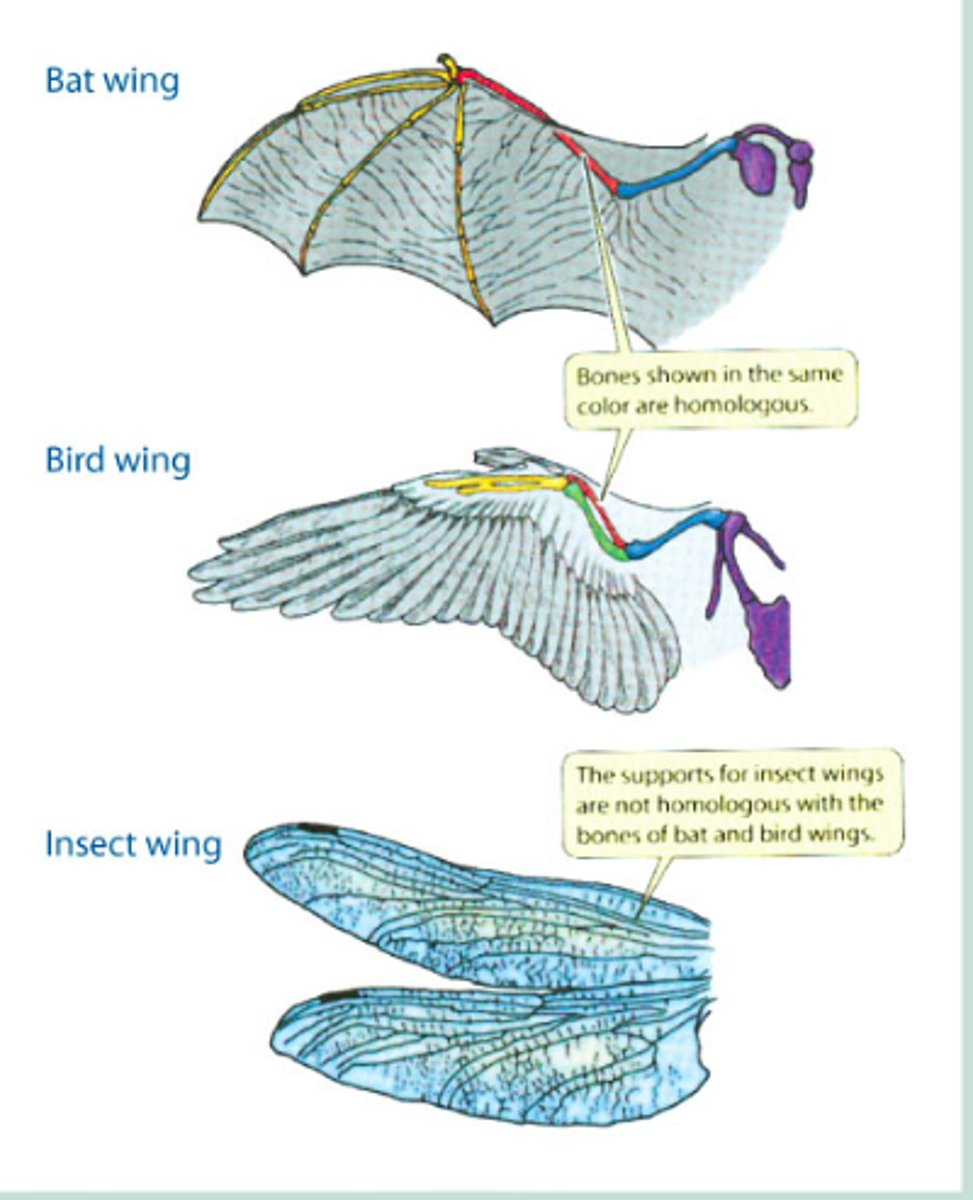
Adaptation
A trait that helps an organism survive and reproduce
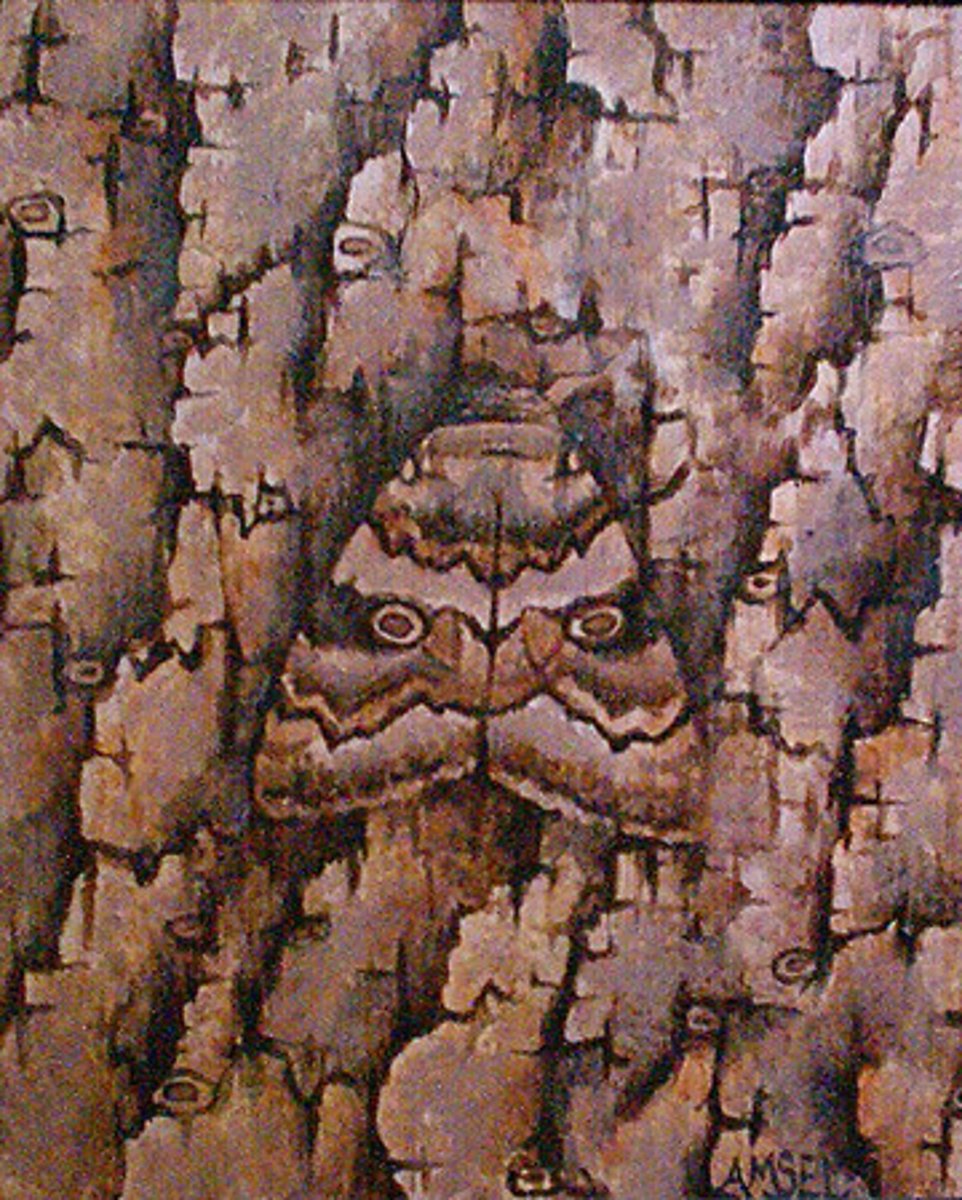
Violation of Hardy Weinberg
Small population , mutations, natural selection, immigration/emigration, non random mating
Conditions for Hardy-Weinberg Equilibrium
1. No mutations
2. Random mating
3. No natural selection
4. Extremely large population size
5. No gene flow (no immigration/emigration)
Evidences of evolution
A. Fossil Evidence
B. Biogeographical Evidence
C. Anatomical Evidence (comparative)
D. Biochemical Evidence
Darwin's Principles of Natural Selection
1. More individuals are born in each generation than can survive
2. Phenotypic variation exists among individuals and this variation is
inherited
3. Those individuals with heritable traits
that are better suited to their environment will survive
4. Traits can be passed from parent to offspring
comparative embryology
Embryos of vertebrates share many anatomical homologies.
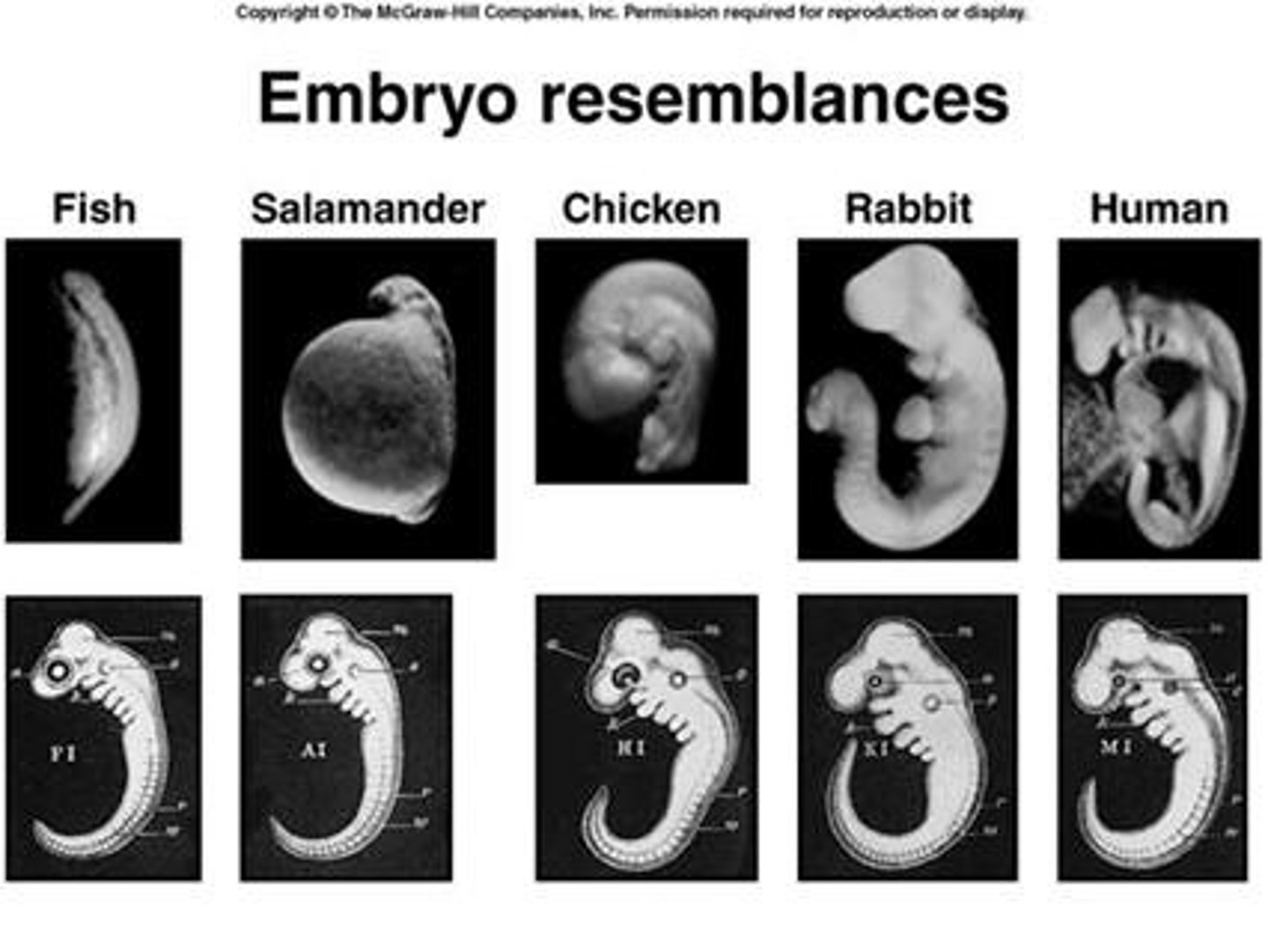
molecular data
chemical data including DNA, RNA, and protein sequences
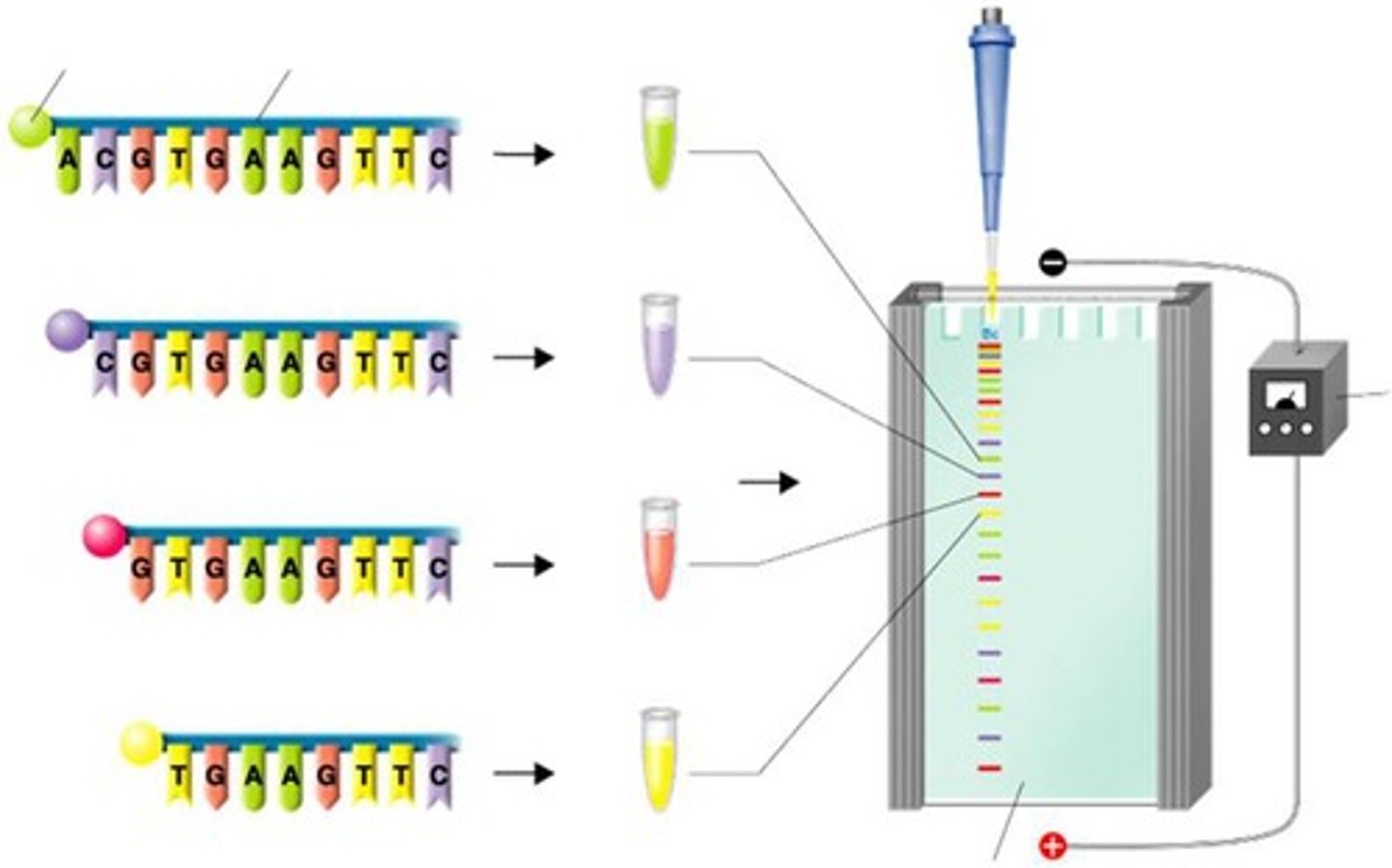
Transduction in bacteria
DNA is transferred from a donor cell to a recipient via a bacteriophage
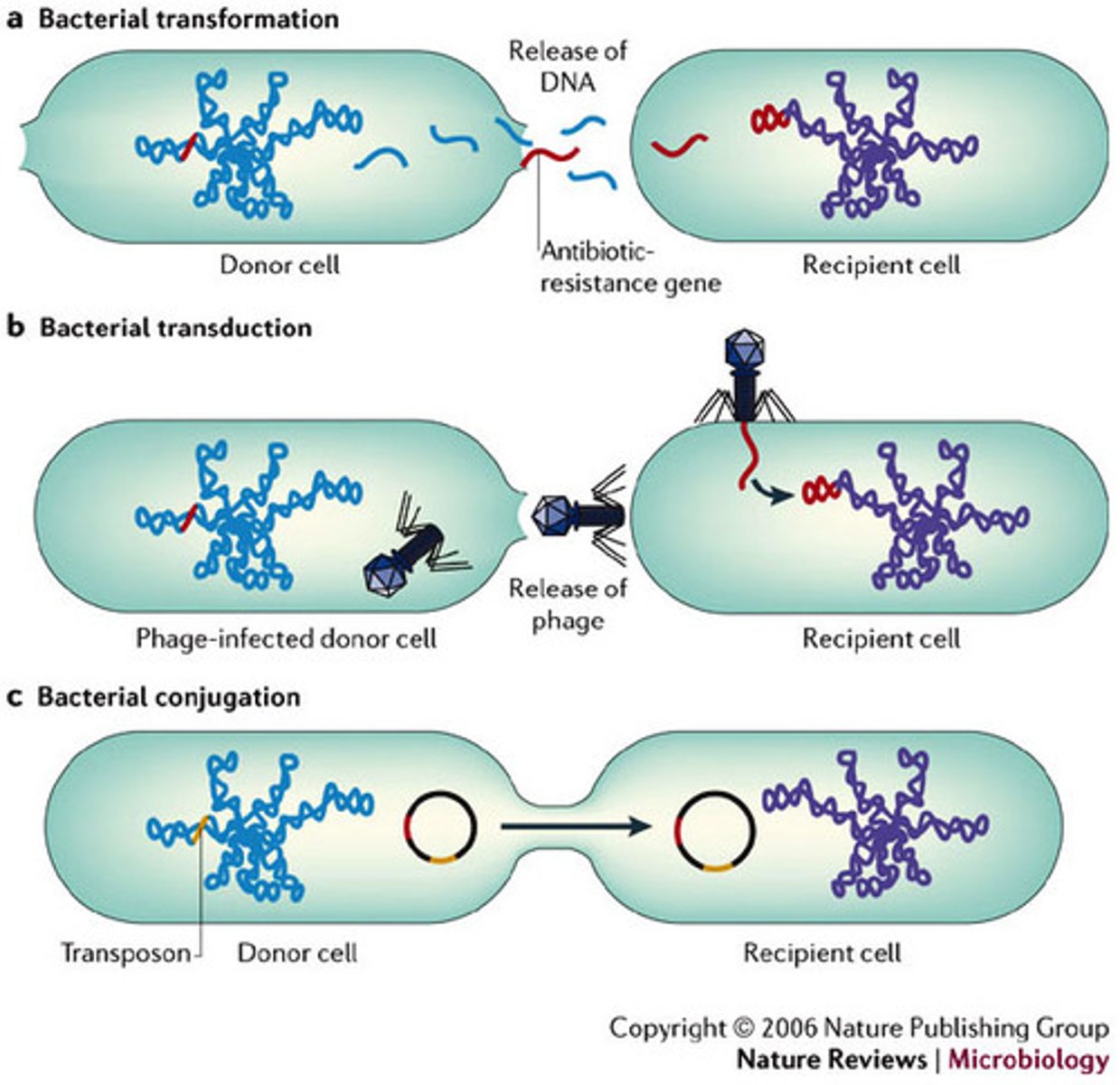
Transformation
(genetics) modification of a cell or bacterium by the uptake and incorporation of exogenous DNA

Conjugation
In bacteria, the direct transfer of DNA between two cells that are temporarily joined.
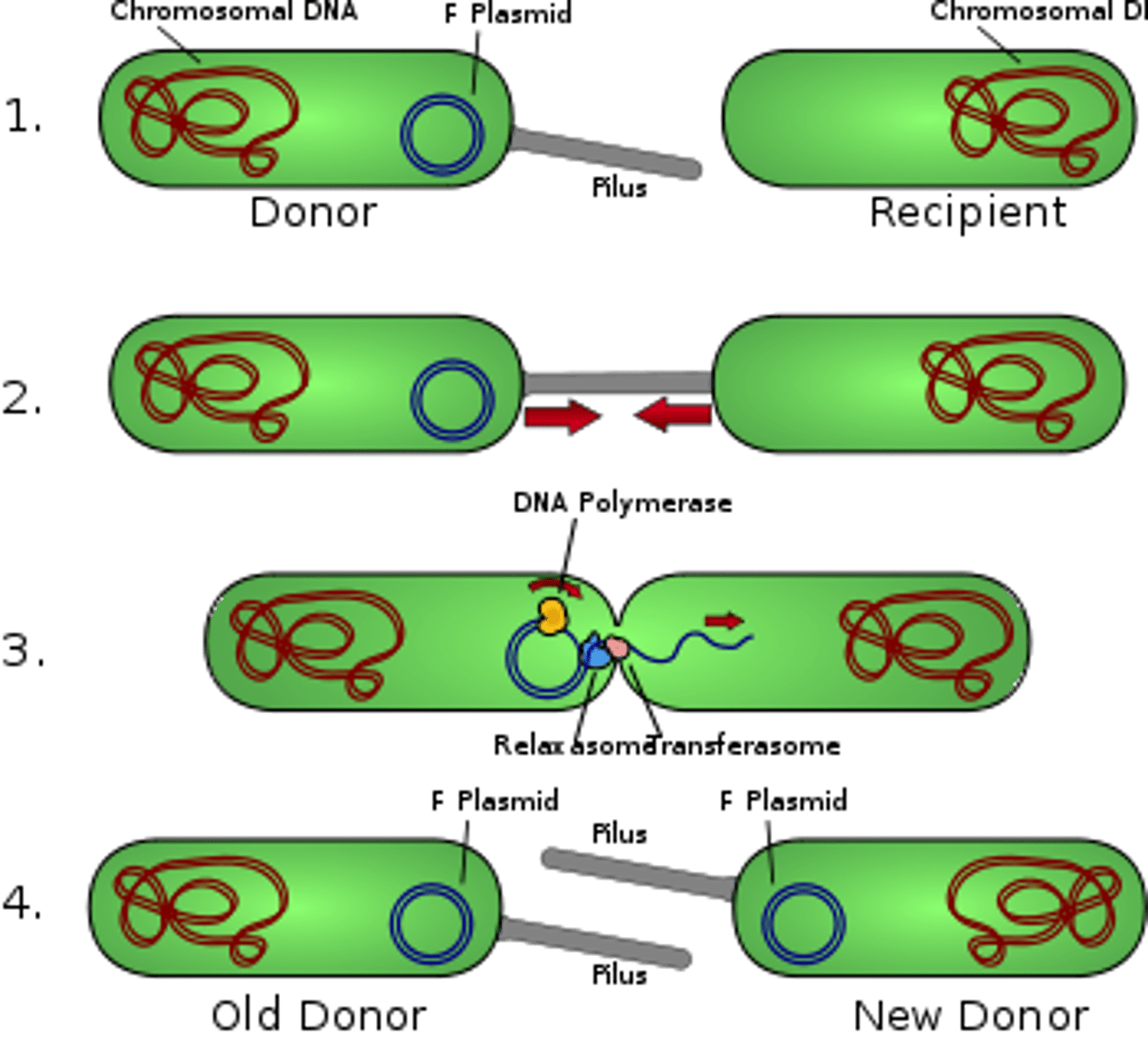
sources of genetic variation
Mutations, Genetic Recombination in sexual reproduction, and lateral gene transfer.
genetic recombination
new combination of genes produced by crossing over and independent assortment, and zygote formation
Darwin's observations
species vary globally, species vary locally, and species vary over time
sexual selection
when individuals select mates based on heritable traits (coloration, song, dance (mating behavior)
Adaptive radiation
An evolutionary pattern in which many species evolve from a single ancestral species